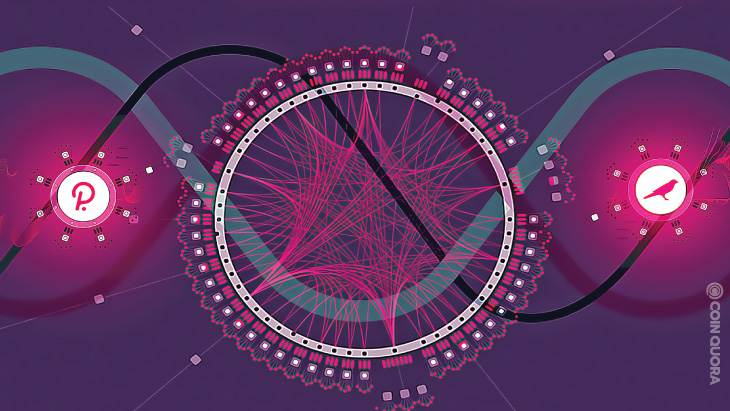In this piece, I attempt to bring to your awareness what parachains are and what they bring to the table.
The evolution of blockchains
In a very basic explanation ,a blockchain is simply a replicated ledger that is distributed, it may be public or private, decentralized or non decentralized etc.
Blockchain 1.0
Satoshi designed Bitcoin to do one thing : acts money.

Satoshi’s discontent for the financial system prompted him to create a tamper-resistant form of money that is void of manipulations from any party.
Today, we may best say Bitcoin is digital gold. Bitcoin is limited in what it can do, it’s not ideal for payments neither does it permit Turing complete smart contracts.
Blockchain 2.0
To extend this permissionless programmability, Ethereum came on board to solve the problems that Bitcoin could not. It brought an idea that we can have a world computer to run apps that no party can stop or censor.
With Ethereum,we have ICOs(tokens),DeFi,NFTs etc.But it’s plauged with scalability and high fees.
Blockchain 3.0
These are new generational blockchains that are different from Ethereum, while Ethereum currently has a great share of the smart contract market, these blockchains are building solutions that will ultimately rival Ethereum.
Many years ago, Manchester United, Chelsea, etc were the dominant team in the English Premier League, Today one cannot sideline the likes of Manchester City, Tottenham, Leceister city, they have become a force to reckon with.
I will be focusing on Polkadot and Kusama, a blockchain built by Gavin Wood, a British scientist who was the co-founder of Ethereum who wrote the EVM, the solidity language, and the Ethereum Yellow Paper.
Polkadot and Kusama Kusama and Polkadot are written in the substrate, a rust framework for building blockchains, it was created by the team at Parity. What differentiates Polkadot from Ethereum is that while Ethereum is a one size fits all approach, Polkadot takes the approach of specialization.
Parachain approach
A parachain is a blockchain built using the substrate framework and is compatible with the polkadot main chain.

A parallel chain(parachain) may bootstrap their own network and security independently without connecting to Polkadot or securing an auction slot. To ease these chains the burden, complexities, and cost of doing such independently, Polkadot invents the idea of pooled security.
A lion may easily attack a hyena if it’s alone but it’s hard to do the same when it’s in groups.
You may liken Polkadot to be a big office building, X does marketing, Y does Production, Z does Customer service, they are under one roof and hence enjoy a collective security.
Parachain auctions

An auction is a process required to secure a space in such an office building. It’s like renting a space in a building, your rent expire after a certain period, you have the option to renew it or move out.
Benefits
-
Shared Security: You do not have to get your own security,the entire office space(Polkadot and connected parachains) is secure(by validators)
-
Shared Resources : Imagine you need internet connectivity and other resources,if you were in a standalone office space,you will need to get your own but with this concept,you share resources.
-
3. Optimizations: All that Polkadot does is to secure these chains,those that need low performance will not have to compete with those that have need for high performance.
-
4. Specialization: Polkadot does not natively supports smart contracts but parachains connected to the Polkadot through the relay chain does.
At the end of the day, a parachain may be excellent at a particular use case and awful at another, so developers will optimize for performance by deploying on parachains that suit their needs.
Economic considerations

-
The $DOT token: Because $DOT or $KSM are bonded for auctions,these tokens are out of circulation for those lease periods,this will help mitigate volatility.
-
Conviction investing: I coined this term to buttress the point that people will only invest in projects that they are confident will deliver great value over the course of their lease period,for the only condition for securing the next auction slot is if they deliver in the previous auction.
-
A new way for fundraising: Private sales will not go away but have a change towards investing in crypto. Before now,you exchange your tokens for the ICO tokens but now you bond your tokens in order to get the platform tokens,the tokens received are the opportunity cost if one stake the tokens.
For example, you stake KSM to ge KARURA tokens,the current return for staking is 15% per Annum,so when you bond KSM to help Karura secure an auction,you are getting Karura tokens worth 15% per Annum what you could have got from staking those KSM. -
Staking: Those who could not ordinarily get rewards for staking because they do not have the minimum required for staking can now bond their tokens and get reward equivalent to what they could have gotten if they staked KSM or DOT in the network tokens.
HOPE, YOU LEARNT SOMETHING TODAY ?
